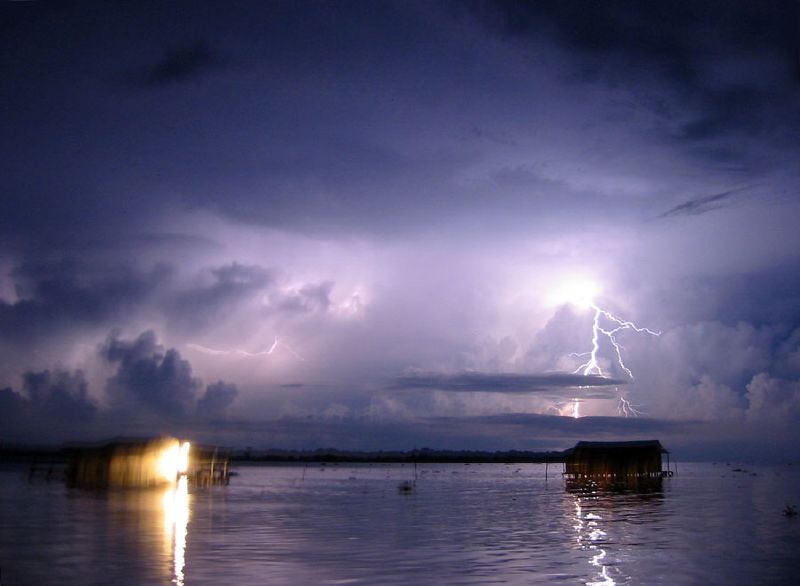Lightning Lake

Lightning. A lot of lightning.
About 150 times a year — that is, slightly less than half the time — the mouth of the Catatumbo is scene to a lightning show unmatched on the planet. The lightning storms last ten hours, give or take, starting an hour after dusk and continuing until daybreak. And the storm is incessant, producing nearly 300 lightning bolts each hour. (A few such bolts can be seen above.) The extreme output of lightning is most likely caused by an odd mix of features found in the surrounding terrain. Winds blowing across the lake and the river’s mouth add moisture to the hot tropical air, and these winds get trapped above the mouth by the numerous mountain ranges surrounding the area. The air, destabilized by the mountains, starts releasing electrical charges each evening.
We do not know when these storms started, but we do know that indigenous lore mentions them, so the Catatumbo storms likely stretch back centuries. This is buttressed by the fact that the Spanish playwright Lope de Vega made reference to similar storms in a poem he wrote in 1597. And the storms are so ingrained in local culture that they are referenced in the Zulia State Anthem (here, in Spanish) and a bolt of lightning is depicted on the state flag (seen here).
While the storms are expected to continue, in January 2010 they momentarily disappeared. Until April of that year, the lightning storms ceased, most likely due to a regional drought brought on by El Nino, as reported by the Guardian. It was the first time that the storms failed to occur in over a century.
Bonus fact: People who are struck by lightning sometimes exhibit a temporary, fern-like pattern on their bodies called Lichtenberg figures. Seen here, the patterns last a few hours or days and are believed to be caused by ruptured capillaries just beneath the skin.
From the Archives: Make Your Own X-Rays: You can use Scotch tape to make your own little Catatumbo show.
Related: A plasma nebula ball. Make a lightning storm on your desk — self-contained inside the globe, of course. 3.5 stars on 53 reviews.

Leave a comment